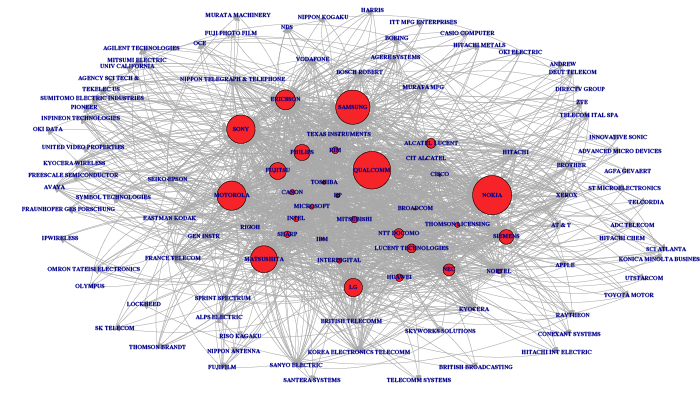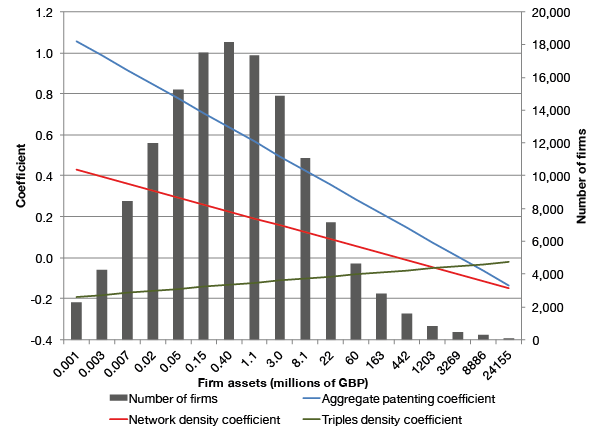The past two decades have seen an enormous increase in patent filings worldwide. The US Patent and Trademark Office, for example, received a record number of nearly 580,000 patent filings in 2014. Still, this number pales in comparison to the Chinese patent office, which received a staggering 928,000 patent filings in the same year, up from fewer than 70,000 only a decade ago. A naïve observer might conclude that these numbers reflect an explosion of innovative activity and that innovators rely heavily on the patent systems to bring their innovations to market.
The increase in patent filings has been particularly pronounced in certain technology areas, such as digital communication devices or the internet. A casual look at the rapid pace of innovation in these industries would indeed suggest that the large increase in the number of patent filings in these technologies is simply a reflection of unprecedented technological progress.
So it may be surprising that there is widespread concern among economists, policymakers, and companies that the patent system is not functioning as effectively as it should. There is a concern that the large increase in patent filings is less a reflection of fast-paced innovation but rather a manifestation of problems inherent in the current design of the patent system. In fact, some go as far as to argue the patent system is discouraging innovation in precisely those technologies that have been seeing sweeping technological changes over the past two decades. One of the main arguments is that the patent system is prone to the emergence of so-called "patent thickets" in the very same technologies that are contributing most to the growth in patent numbers.
Figure 1. A patent thicket
A patent thicket is a set of patents belonging to many firms that protect overlapping parts of the technology space (Shapiro 2000). In this case, companies inadvertently block each other’s innovations. Patent thickets arise where individual products draw on innovations protected by hundreds or even thousands of patents, often with fuzzy boundaries. These patents belong to many independent and usually competing firms. Figure 1 illustrates this using the example of the telecommunication industry – the size of the bubbles represents the number of patents held by companies and the lines between the bubbles show the presence of potentially overlapping patents between companies.
Patent thickets can lead to hold‐up of innovations, increases in the complexity of negotiations over licenses and increases in litigation, and can also create incentives to add more and weaker patents to the patent system. All these phenomena increase transaction costs, reduce profits that derive from the commercialisation of innovation, and ultimately reduce incentives to innovate.
One worry is that patent thickets may stop companies large and small from even entering those technologies in which patent thickets are widespread. To investigate this question, in a recent paper we analyse the effect of patent thickets on entry into technology areas by firms in the UK (Hall et al. 2015). We present a theoretical model that describes incentives to enter technology areas that differ in the degree of technological opportunity, complexity of technology, and the potential for hold-up in patent thickets.
We derive a number of predictions regarding the effects of complexity (positive), opportunity (positive), and expected hold up (negative) on entry from the model. The predictions are tested using data on patenting activity of UK firms where we define entry into a new technology as first-time patenting in a given technology class by a company. We distinguish empirically between complexity and hold-up potential and control for technological opportunity in several different ways.
As shown in Figure 2, the measure of hold-up potential (Triples density coefficient)1 is associated with a reduction of first time patenting in a given technology area, controlling for the level of technological complexity and opportunity. The figure also shows that this relationship is independent of firm size in our data. Technology areas characterised by more technological complexity (Network density coefficient)2 and opportunity (Aggregate patenting coefficient,3 and 5-year growth NPL coefficient),4 in contrast, see more entry. This is in line with the predictions we derive from the theoretical model. Our evidence indicates that patent thickets raise entry costs, which leads to less entry into technologies. It is important to emphasize that this result is not due simply to very active patenting in a technology nor to citation density in general, as these have been controlled for.
Figure 2. The effect of thickets on technology entry
These results indeed support the view that many patents are filed in technologies in which there is a lot of technological change, as well as the view that some of these technologies are associated with patent thickets.
We show that patent thickets reduce entry (first time patenting in an area) by 20%, which is substantial bearing in mind that the average probability of entry into a technology area is only about 1.5% in our sample.
This effect is surprisingly strong and suggests that measures to reduce patent thickets might allow more entrants to compete in important technology areas.
References
Hall, B H, C Helmers, and G. von Graevenitz (2015), “Technology Entry in the Presence of Patent Thickets”, NBER Working Paper 21455
Harhoff, D, G von Graevenitz, and S Wagner (2015), “Conflict Resolution, Public Goods and Patent Thickets”, Management Science, forthcoming
Shapiro, C (2000), “Navigating the patent thicket: Cross licenses, patent pools, and standard setting”, Innovation policy and the economy 1: 119–150.
Endnotes
[1] The triples measure corresponds to a count of the number of fully connected triads on the set of firms’ critical patent citations (extracted from EPO examiner search reports). At time t each unidirectional link between two firms A and B corresponds to one or more critical references to firm A’s patents in the set of patents applied for by firm B in the years t, t-1 and t-2. We use the same measure of triples as Harhoff et al. (2015), which contains all triples in each technology area.
[2] Network density is computed using citations among all the patents that have issued at the U.S. patent office in the particular technology area during the 10 years prior to the date of potential entry.
[3] Measured as the logarithm of the aggregate EPO patent applications in the technology sector during the year.
[4] Measured as the past 5-year growth rate in the non-patent (scientific publication) references cited in patents in that technology class at the EPO.








